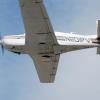Stay Warm Engine Saver heated oil dipstick
-
Members Online
- Himark
- BillC
- donkaye, MCFI
- Ragsf15e
- alextstone
- DCarlton
- dkkim73
- Justin Schmidt
- gdwinc
- mike_elliott
- jcolgan
- Yooper Rocketman
- MattOK
- CCowboy
- Jake@BevanAviation
- Coachella Bravo
- 00-Negative
- tim417
- A64Pilot
- M20F
- 201Steve
- TCC
- DonMuncy
- flyboy0681
- rahill
- Parker_Woodruff
- Mooney-Shiner
- 201er
- kaba
- Falcon Man
- Skyland
- Yugow
- Kelpro999
- Jim F
- Ron McBride
- GeeBee
- Bondo
- Flyler


Recommended Posts
Join the conversation
You can post now and register later. If you have an account, sign in now to post with your account.